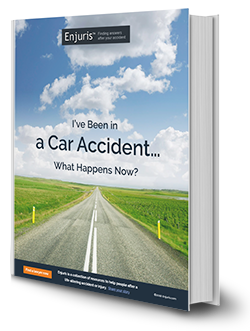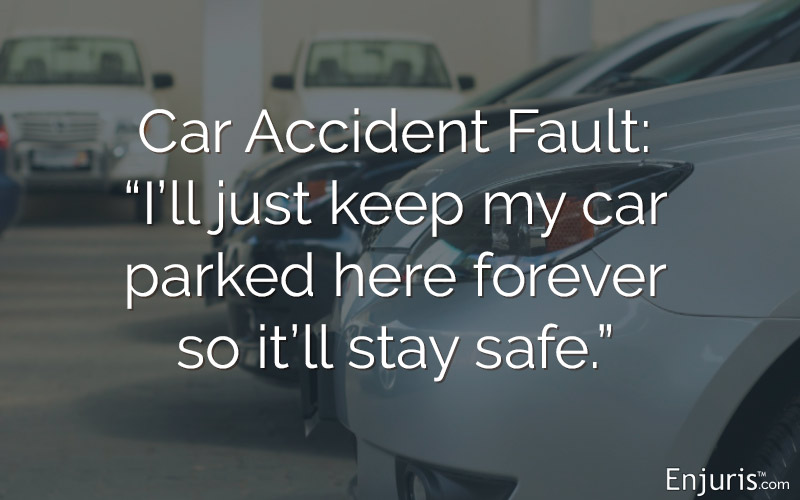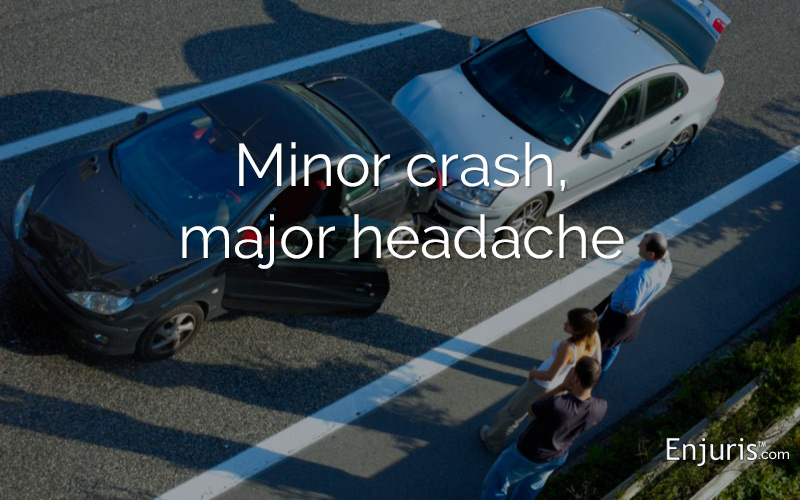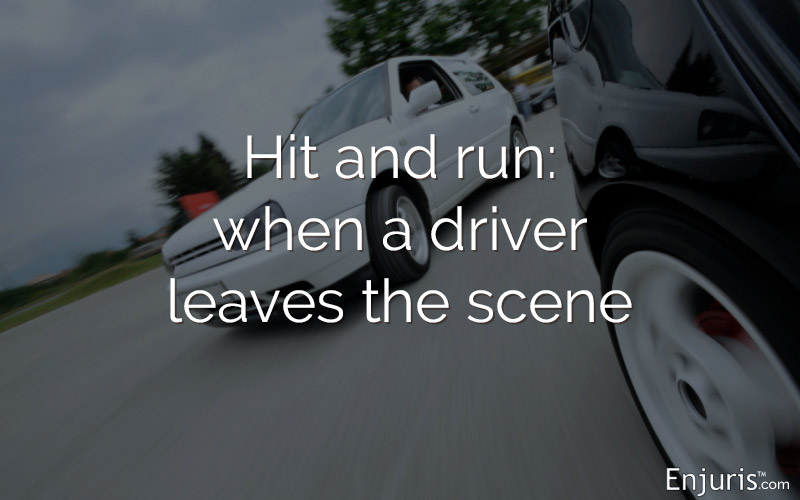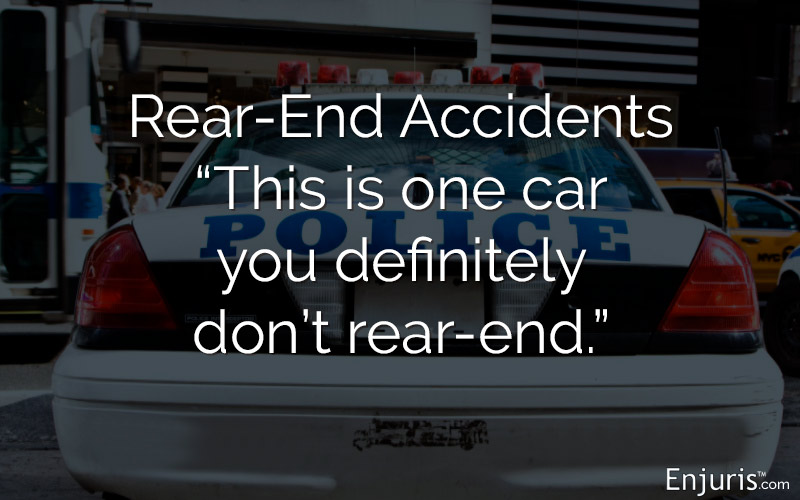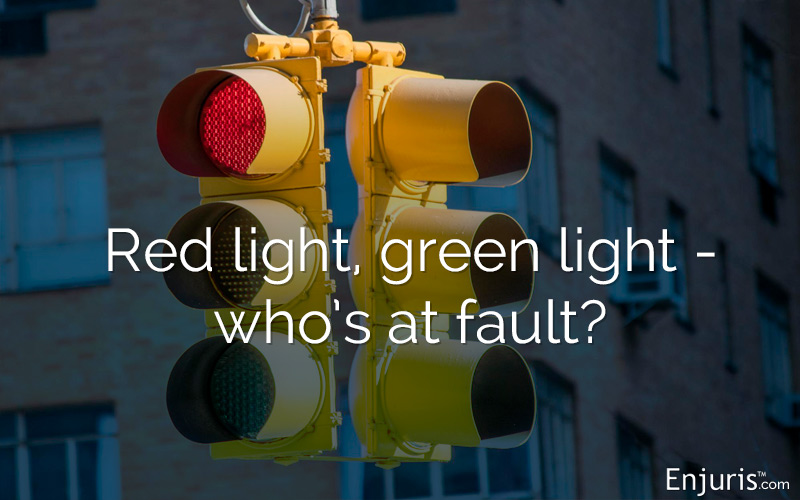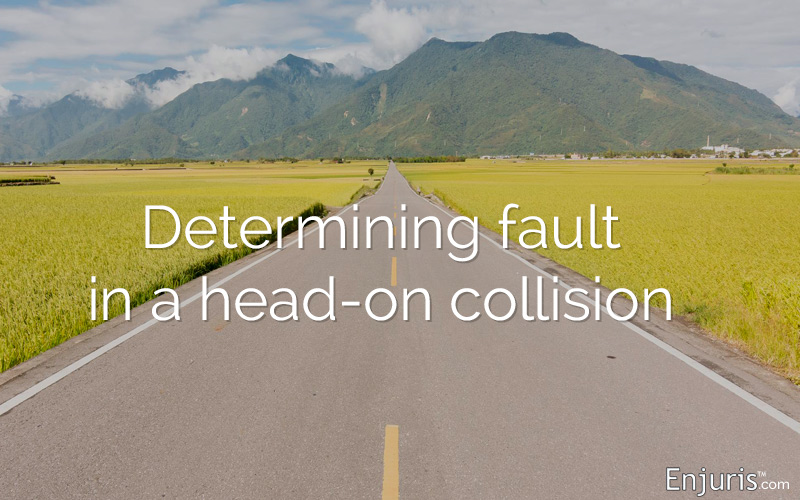Find a Tennessee auto accident lawyer who can help you recover damages for your crash
We've all had a chill down our spine when we hear the distinct squeal of brakes—or the cringy sound of metal scraping against metal. Or have you ever felt a jolt when your car hits another object (hopefully not too hard)?
Most people experience 3 to 4 car crashes in their lifetime, or once every 18 years or so. Most collisions will be minor. But even a "minor" crash can be a big hit to your wallet, which is why it's important to know the laws about Tennessee car crash liability and Tennessee insurance laws.
It's also important to know what causes car accidents because awareness of these common pitfalls can help prevent your being involved in one.
12 common causes of car accidents
The National Highway Traffic Safety Administration (NHTSA) lists the following as the most common causes of car accidents:
- Speeding. Many people consider the posted speed limit as a suggestion, rather than a limit. The speed limit is determined based on the type of road (including safety concerns like sharp turns or hills), the amount of traffic, and the traffic patterns. If you speed, you can lose your ability to navigate curves, misunderstand another driver's actions, or be unable to compensate for an unexpected situation.
- Driving under the influence of alcohol or drugs. The NHTSA reports that more than 12% of drivers involved in fatal crashes were found to have a blood-alcohol content (BAC) higher than legal limits.
- Dangerous lane changes or swerves. There can be a variety of reasons why a driver might swerve unexpectedly. Among them are distracted driving (for example, driving while texting), drowsy driving, or a medical event. About 8.5% of the recorded crashes were attributed to a driver having swerved into another vehicle or off the road.
- Failure to yield. Nearly 7% of fatal crashes were because a driver failed to yield the right of way. A driver who's driving defensively will yield even if they have the right of way in order to avoid a crash.
- Distracted driving. You've probably heard about the dangers of driving while using a mobile phone, but there are lots of ways to become distracted while driving. Personal grooming, eating, dashboard controls, passenger behavior, and events outside your vehicle are all ways that your mind (and eyes and hands) can be distracted from the most important task of driving.
- Careless driving. If you're careless, your actions might be unintentional or "accidental", but unintentional reckless action is as dangerous as intentionally dangerous driving.
- Overcorrection. Part of driving is reacting. A quick reaction is necessary to driving safely, but sometimes a driver will react in a way that creates an outsized impact, or an overreaction. For example, if the driver wasn't paying attention and is surprised by what's ahead, they might then swerve too sharply or quickly to avoid something ahead without looking for what might be to the right or left. Overcorrection was responsible for about 4% of fatalities in traffic accidents over the past decade.
- Failure to obey traffic signs and signals. You need to stop at a stop sign, follow traffic lights, and heed the instructions of any other sign or signal. Period. Failure to obey signs and signals is one of the major causes of traffic-related fatalities.
- Reckless driving. Recklessness is disregard for road rules and safety. Reckless driving causes more than 3% of fatal traffic-related accidents.
- Swerving. Most things that can cause an accident when you drive are outside your own vehicle. You might encounter a pedestrian who crosses outside the crosswalk, debris that becomes airborne from high winds, an item that falls off the back of a truck and lands in the road, or any number of other obstacles. It's probably reflexive to swerve, but it can cause an accident if there's traffic to your right or left when you leave your lane.
- Bad weather. Rain and snow can contribute to slippery roads and difficult driving conditions, but precipitation isn't the only hazard. Fog and sun glare can also contribute to accidents because they reduce drivers' visibility.
- Drowsy driving. You might be the kind of person who would never drive drunk. But lots of people who think they're cautious and responsible will get behind the wheel when they're too tired to drive safely. Drowsy driving is as dangerous as drunk driving. Aside from the possibility of nodding off, being too tired slows your reaction time and can make you unable to respond to what's happening around you.
Tennessee car accident statistics
The Tennessee Department of Safety & Homeland Security offers a robust dashboard with statistics on crashes on a daily, monthly, and annual basis.
There were 3,862 crashes reported in 2019, which was down from 4,073 in 2018. In 2019, there were the most crashes in September and the fewest in January and February.
The table below reflects special circumstances for crashes in Tennessee in 2019. The total number is higher than the number of crashes because some crashes meet more than one of the special circumstances.
| Conditions in Tennessee car crashes (2019) | Number |
|---|---|
| Unbelted occupant | 2,943 |
| Senior driver | 1,018 |
| Drunk driver | 819 |
| Motorcyclist involved | 793 |
| Drugged driver | 712 |
| Speeding driver | 604 |
| Distracted driver | 487 |
| Pedestrian involved | 486 |
| Large truck involved | 430 |
| Teen driver | 326 |
| Drowsy driver | 163 |
| Bicyclist involved | 59 |
| ATV involved | 59 |
| Other non-motorist involved | 17 |
| School bus involved | 13 |
Tennessee car accident laws
Each state in the U.S. is classified as either "at-fault" or "no fault." In an at-fault state, the driver who is at fault for an accident is legally responsible for the costs of damages and injuries. The at-fault driver's insurance company pays for the other driver's expenses.
If you're in a no-fault state, each driver files a claim with their own insurance company, regardless of who was at fault. However, Tennessee is an at-fault state, which means the person responsible for the crash is also responsible for covering the bills that arise as a result.
Tennessee comparative negligence
Tennessee is a comparative negligence state. Each driver is assigned a percentage of liability in an accident. A driver who is more than 50% at fault for an accident cannot recover any damages in a lawsuit.
Here's an example of how comparative fault works:
Speedy Stephanie was traveling East on Maple Avenue. She was in a hurry to get to her destination, so she was driving about 10 miles faster than the posted speed limit.
Thirsty Theodore was driving West on Maple Avenue approaching Stephanie head-on. He was driving carefully, at the speed limit, but he took his eyes off the road for a moment to reach for his water bottle on the passenger seat.
At the moment Theodore took his eyes off the road, he and Stephanie collided head-on.
What happened?
Accident reconstruction specialists find that Stephanie was in Theodore's lane at the time of the crash. Because she was driving too fast, her car moved over the centerline on the curvy road. The evidence shows that Stephanie was 90% liable for the crash.
However, Theodore did take his eyes off the road for an instant. Although he didn't cause the crash, investigators determine that if he had been watching more carefully, he likely could've swerved out of the way and avoided an accident. Theodore is found to be 10% liable for the crash.
In this scenario, the amount that Theodore could recover in damages is reduced by 10%.
Tennessee car accident statute of limitations
You have 1 year from the date of an accident to file a legal claim. If you don't file within that time period, the court can refuse to hear your case.
How to prove fault in a Tennessee car accident
Sometimes, it's easy to tell how an accident happened. And if you're fortunate enough that everyone involved is cooperative, the process of recovering damages might be quick and simple.
But usually, that's not the case.
There are certain conditions where one driver might be presumed liable. For example, a driver making a left turn across oncoming traffic is often held liable for a collision because the oncoming driver would've had the right of way. If it's a rear-end accident, usually the driver behind is at fault. Usually (but not always), the driver is at fault when it's an accident between a motorist and a pedestrian.
Who decides?
To determine who's at fault, the insurance company will look first at the police report. This report is the primary official document of evidence in a crash. However, the police don't decide who's held liable for damages. If one of the drivers is charged with a traffic infraction, that will often lead to that person's being held responsible.
However, if the insurance companies (yours and the other driver's) can't reach a settlement or agree on fault, the next step will be to file a personal injury lawsuit — and then the decision belongs to the court.
It's important that if you're in a condition to do so, you collect as much evidence as possible immediately after an accident. This might include:
- Contact information from witnesses. Whether it's other drivers or passersby, write down as many names, phone numbers, and other contact information as possible. You don't have to worry about taking a witness statement since the police should do that, but you want to be able to have your insurance company or lawyer be able to reach people who observed what happened.
- Take accident scene photos. Weather conditions, damage to cars or property, the position of vehicles, and other elements of the accident scene might be very important in determining liability. Take as many pictures and videos as you can. Use your phone.
- Get a medical evaluation. Even if you don't feel injured, go to your doctor, an urgent care, or a hospital right away for an examination. Some symptoms don't appear immediately and you might not experience effects from a collision until days or even weeks later. A doctor's account of your condition immediately after an accident can be important evidence.
Tennessee car insurance requirements
A Tennessee driver must carry the following minimum amounts of liability insurance coverage:
- $25,000 for each injury or death per accident.
- $50,000 for total injuries per accident.
- $15,000 for property damage per accident.
You have the option to add further protection including uninsured motorist, comprehensive, and collision coverage.
Damages after a car accident
The purpose of a personal injury lawsuit — whether it's for a slip and fall, car accident, defective product injury, or any type of injury — is to make the plaintiff whole. The intent is to restore the plaintiff to the financial position they'd have been in if the accident hadn't happened.
Through a car accident claim in Tennessee, you can seek to recover costs that include:
- Medical treatment (doctor and hospital visits, surgeries, diagnostic testing, prescription medication, etc.)
- Assistive devices like wheelchairs, walkers, prosthetics, etc.
- Lost wages and loss of future earning capacity during your recovery (or if you become disabled)
- Wrongful death if you've lost a family member in an accident
- Property loss
- Ongoing therapies or continued treatment
- Pain and suffering or other emotional distress
- Loss of consortium
- Punitive damages
When to call a Tennessee auto accident lawyer
If your car accident was minor and liability is clear (and the at-fault driver is willingly taking responsibility), you might be able to handle it through the insurance company and not involve a lawyer.
But most car and truck accidents aren't so easily handled. You might never need to file a personal injury lawsuit, but you might need assistance in receiving the correct insurance settlement.
If your injuries are serious or will require future medical care or expenses, you should be sure you're recovering the amount you need to cover them. The right lawyer is experienced in calculating and negotiating a settlement that will cover an injured person's long-term needs.
The Enjuris law firm directory is a great source for finding a Tennessee car accident lawyer near you who can help you through what's likely a difficult and stressful event. Find a lawyer who will work with the insurance company to get the settlement you need and deserve, and who will take further steps to reach a resolution if necessary.
- Were You or a Loved One Hurt in a Tennessee Car Accident?
- A Guide to Tennessee Aviation Accident Lawsuits
- Boating Accidents in Tennessee: Liability and Damages
- Can You Recover Compensation for a Tennessee Bike Accident?
- Guide to Tennessee Motorcycle Accident Injury Lawsuits
- Guide to Tennessee Train Accident Injuries & Liability
- Legal Guide to Tennessee Bus Crash Injuries & Damages
- Tennessee Car Insurance Laws, Minimums, and Recommendations
- Tennessee Distracted Driving Laws & Car Accidents
- Tennessee DUI Laws, Penalties, and What to Do If You’re Injured
- Tennessee Hit and Run Lawsuits
and Penalties - Tennessee Pedestrian Accidents Laws & Injury Claims
Did you know that car accident law varies by state?
Hurt in a car crash? You may find these resources helpful
Need a lawyer?
What does an injury lawyer do?
A personal injury lawyer helps individuals who have sustained injuries in accidents to recover financial compensation. These funds are often needed to pay for medical treatment, make up for lost wages and provide compensation for injuries suffered. Sometimes a case that seems simple at first may become more complicated. In these cases, consider hiring an experienced personal injury lawyer. Read more
Common car accidents
